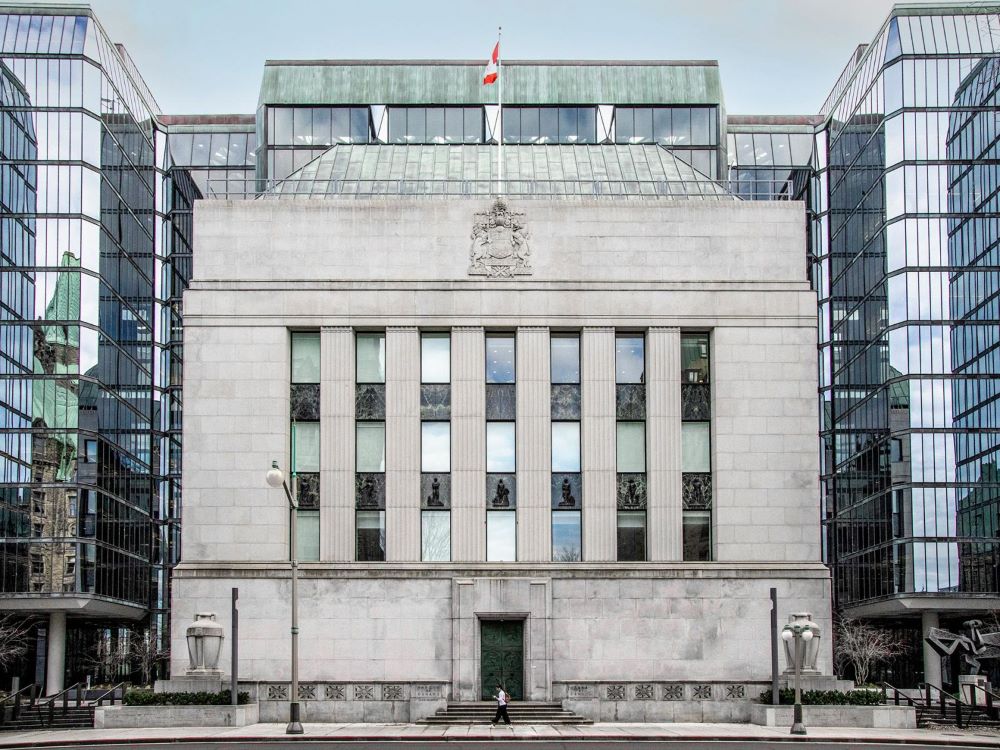Bank of Canada rate hike higher than anticipated
The 4.25 per cent rate is the highest it’s been since 2008.

The Bank of Canada complex sits in Ottawa. – Bank of Canada Museum
Key Takeaways:
- The Bank of Canada raised the rate 50 basis points to 4.25 per cent, the seventh rate hike this year.
- The hike was bigger than many experts anticipated.
- Their latest data put CPI inflation at 6.9 per cent.
The Whole Story:
The rate hikes keep coming.
The Bank of Canada announced that it has increased its target for the overnight rate to 4.25 per cent, with the Bank Rate at 4.50 per cent and the deposit rate at 4.25 per cent. The bank is also continuing its policy of quantitative tightening. It’s the seventh rate hike this year.
Bank officials explained that inflation around the world remains high and broadly based. Global economic growth is slowing, although it is proving more resilient than was expected at the time of the October Monetary Policy Report (MPR). In the U.S., the economy is weakening but consumption continues to be solid and the labour market remains overheated. The gradual easing of global supply bottlenecks continues, although further progress could be disrupted by geopolitical events.
According to the bank, Canada’s third quarter GDP growth was stronger than expected, and the economy continued to operate in excess demand. Officials explained that Canada’s labour market remains tight, with unemployment near historic lows.
“While commodity exports have been strong, there is growing evidence that tighter monetary policy is restraining domestic demand: consumption moderated in the third quarter, and housing market activity continues to decline,” said the bank in a press release. “Overall, the data since the October MPR support the bank’s outlook that growth will essentially stall through the end of this year and the first half of next year.”
Their data shows that CPI inflation remained at 6.9 per cent in October, with many of the goods and services Canadians regularly buy showing large price increases. Measures of core inflation remain around 5 per cent.
“Three-month rates of change in core inflation have come down, an early indicator that price pressures may be losing momentum,” said the bank. “However, inflation is still too high and short-term inflation expectations remain elevated. The longer that consumers and businesses expect inflation to be above the target, the greater the risk that elevated inflation becomes entrenched.”
Bank officials said they will be considering whether the policy interest rate needs to rise further to bring supply and demand back into balance and return inflation to target.
“We are resolute in our commitment to achieving the 2 per cent inflation target and restoring price stability for Canadians,” officials said.
The hike was higher than expected by some experts, who anticipated a 25 basis points rather than 50. Commercial real estate firm Avison Young did not expected the larger hike due to recent signs that domestic demand, earnings growth and core inflation are starting to ease.
“Third quarter GDP data came in stronger than expected, and the labour market remains tight with the unemployment rate falling marginally last month,” said Nick Axford, Avison Young’s chief economist. “This probably tipped the balance to go for a larger increase in policy rates in what must have been a tight decision.”
Axford explained that the accompanying forward guidance suggests that rates may well now have peaked, however he believes another 25 basis point hike could come in January, depending on what the data show.
“Interest rates should therefore stabilise early in 2023, if they have not done so already – provided that inflation starts to move sustainably downwards from the early part of next year,” said Axford. “Rates may even start to fall later in 2023 – again, very dependent on the data. In the meantime, the latest increase coupled with the quantitative tightening that is also underway represents a significant tightening of financial conditions, which will restrict the flow of credit in the economy.”
He believes this will act as a further constraint on the commercial real estate sector and housing market, impacting both pricing and transaction volumes.
Canada’s unions were not pleased by the hike which they say could lead to the loss of jobs and homes.
“Economists have urged the Bank of Canada to let the impact of previous rate hikes take hold before taking further action that could risk causing a damaging recession. It’s regrettable the Bank of Canada rejected that advice,” said Bea Bruske, president of the Canadian Labour Congress. “Moving ahead on another rate hike today could mean hundreds of thousands of workers losing their jobs and families losing their homes. There is a better way.”
Bruske argued that wage growth is being unfairly blamed for the country’s economic woes and the bank’s attention should be shifted elsewhere.
“Central banks raise rates to cool the economy and lower inflation. But the Bank of Canada has gone further and has waged a public relations campaign warning about the phantom menace of higher wages,” continued Bruske. “There is simply no evidence of this. Real wages are down more than 5 pe rcent over the past two years and continue to lag behind inflation. Meanwhile, corporate profits have ballooned to record levels. It is time for a more balanced policy approach.”
Bruske urged the government to take action against price gouging, including an excess profits tax on corporations.
